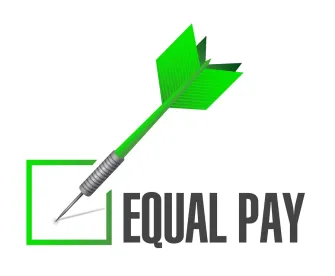Businesses in Great Britain with 250 employees or more are required to publish information annually showing the difference in average pay between their male and female employees – the “gender pay gap”. This year the reporting obligation was suspended, but what is likely to happen for the reporting year 2020/21?
In March, the Government Equalities Office (GEO) and the Equality and Human Rights Commission issued a joint press release stating that employers would not be obliged to report their gender pay gap data for the 2019/20 reporting year. The deadline for doing so was 4 April 2020. In light of the uncertainty and additional pressures placed on businesses by the coronavirus outbreak, they concluded that requiring employers to publish this information was just an obligation too far.
In the end, roughly 6,000 employers reported their data anyway, compared to nearly 11,000 the previous year. The fact that so many employers reported even though not obliged to do so is perhaps not that surprising. By the time the government made its announcement, only the month before the deadline, many employers had clearly already run the relevant reports and done the necessary analysis, so there was little to deter them from publishing their statistics, especially if they showed that the data was pointing in the right direction.
In fact, it is likely to be this reporting year (2020/21) that employers are more concerned about. They will be required to analyse their pay data from April 2020 at a time when possibly a significant number of their employees had been furloughed on reduced pay and more staff than usual may have been off work due to sickness. They may also not have had the usual capacity this year to progress initiatives aimed at reducing the gender pay gap. What will all this mean for employers?
The first thing to say is that there has been no suggestion that gender pay gap reporting will also be suspended for the reporting year 2020/21, and though changing the obligations on employers with little or no notice has been characteristic of the government’s approach over the last 8 months or so, progress with the vaccine makes that now less likely than before. Employers should therefore be collating and analysing their data now, with the 4 April 2021 deadline firmly in their calendars.
We have heard unofficially that employers will be able to exclude any staff who are on furlough during the relevant pay period from their gender pay gap (hourly) calculations. We understand that the GEO has said in correspondence that employees on furlough who received less than their full pay will not count as “full-pay relevant employees” for GPG reporting purposes and should therefore be excluded when calculating: (i) the mean gender pay gap using hourly pay; (ii) the median gender pay using hourly pay; and (iii) the percentage of men and women in each hourly pay quarter.
This is because under the Gender Pay Gap Regulations, a “full-pay relevant employee” is defined as a relevant employee who is not, during the relevant pay period (e.g. April 2020), being paid at a reduced rate or nil as a result of being on leave. Examples of leave given in the Regulations include annual leave, family-friendly leave, sick leave and special leave, but it is not an exclusive list and it seems that the government will include furlough for these purposes too. This seems sensible; to do otherwise could seriously skew an employer’s GPG data, especially because (according to research conducted by the Women’s Budget Group, an organisation that monitors the disparate impact of government policies on the sexes), roughly 133,000 more women than men were furloughed between March and August 2020. According to HMRC’s August report on take-up of the Job Retention Scheme, however, that still represents a lower proportion of eligible women than men who were furloughed, at 29% as against 34%.
However, we understand that any employees on furlough will have to be included when it comes to calculating: (i) the percentage of men and women receiving bonus pay; (ii) the mean gender pay gap using bonus pay; and (iii) the median gender pay gap using bonus pay. This is because for these calculations an employer takes into account “relevant employees”, namely all employees employed on the snapshot date (5 April 2020). The fact that furloughed staff are not excluded when looking at bonus data should not be such a problem because here you are looking back over the 12 months preceding 5 April 2020, which should have been largely unaffected by the pandemic.
Will your GPG figures still be skewed if furloughed employees are excluded from your calculations? Possibly, but not necessarily. Much will depend on how many employees you had to furlough, whether more women than men were furloughed, which parts of the business they were working in, etc. If, for example, you are a non-essential retailer and had to furlough all your shop staff, just leaving your Head Office staff working on the snapshot date, the pool of employees that you will be looking at will be much smaller and as a result your gender pay gap data is likely to be wholly unrepresentative of the wider position in your organisation. But this will not be the case for all employers. A handful of employers (187 at last count) have already published their gender pay gap data for this reporting year and in the few reports that we have looked at there is nothing to suggest that the pandemic impacted negatively on their pay gap data.
We would recommend that employers run their reports and see what the data looks like. They may wish to consider running the reports twice, one version that includes furloughed staff (but at their usual rate of pay) and one version that excludes them, just to see what the figures look like.
The next step will be to produce a narrative. Although a narrative is not required under the Regulations, we would generally strongly recommend providing one. A narrative gives employers the ability to explain any pay gap, why it might have been skewed (or not) by particular events (most obviously the pandemic), whether the pay gap is getting smaller and, if not, why. Crucially it also gives employers the opportunity to explain what steps they are taking to reduce the gender pay gap. This is particularly relevant for any business concerned about its ESG rating, as investors are increasingly looking at such data when making their investment decisions.
In addition, if you opted not to publish your data for 2019/20, you may want to consider publishing this voluntarily now (especially if you have a good story to tell) or at least explaining the direction of travel if you have one year of missing data. It is possible to take the view that the imperatives of the pandemic will lead readers of GPG reports published in 2021 to take a fairly sanguine view of fluctuations in progress towards reducing pay gaps, but this will only be temporary and so the pandemic does not provide any excuse for not doing the best you can with the statistics you have.
We should flag that at this stage we have not seen any official guidance from the government about how employers should be compiling their gender pay gap statistics for 2020/21, whether they should include/exclude furloughed staff or how far other survival measures (temporary voluntary unpaid leaves of absence, pay cuts, etc.) should be taken into account and/or dealt with in their report. We hope to see some guidance shortly (before March this time, ideally) and we will of course update you then accordingly.
Finally, just to mention that a Private Members’ Bill has been introduced in the House of Commons. It has its second reading in January. Although the Bill is primarily focused on equal pay (not the same thing as the gender pay gap!), it is seeking to make gender pay gap reporting mandatory for employers with only 100 or more employees. This Bill is unlikely to become law for the time being, but as it would dramatically increase the number of employers covered by the GPG Regulations, we will keep you updated on its progress.




 />i
/>i

